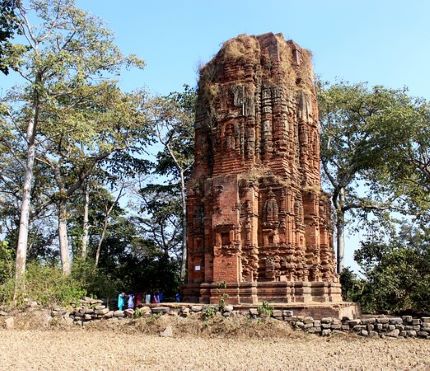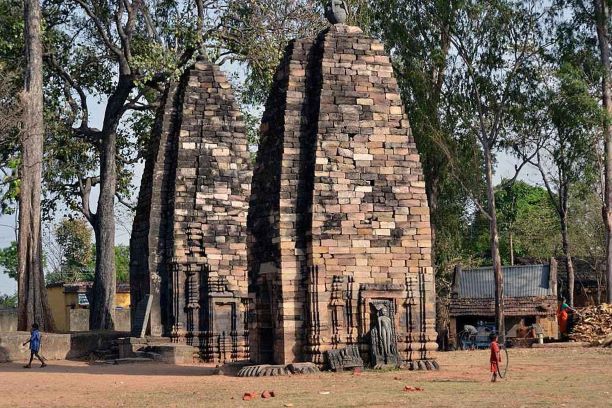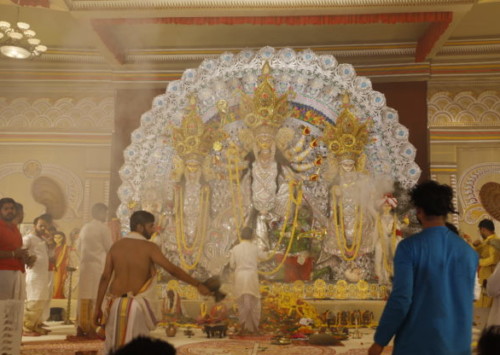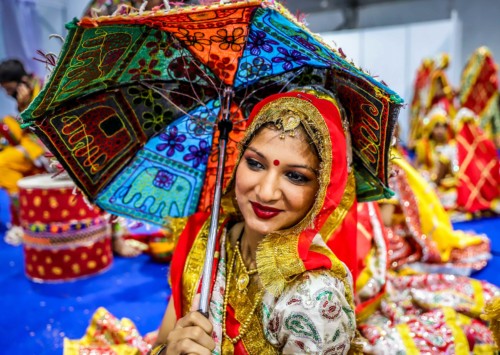The ruins of Purulia temples
Purulia district, located in the east Indian state of West Bengal, possesses a diverse amount of culture and heritage. Surrounded by Midnapore, Bankura and Burdwan district, this place has undergone significant changes over the past few decades from being a part of a country known as Vajra Bhumi (diamond level).
One of the oldest districts of India, Purulia has been deciphered as a significant part of the territory of 16 Mahajanapadas (set of 16 kingdoms), existing in 5th century AD. Despite going through many cultural influences through various periods of history, Purulia has always engaged lively throughout these changes. Such is shown in the temples of this place that represents the art and architecture of Jainism.
Jainism was one of the first religions to get prominence in Purulia. It is said that even today, the aboriginal people follow some of the rituals tracing back to the roots of Jainism. The religion rose to prominence due to Anantavarman Choda-Ganga-Deva, ruler of Eastern Ganga dynasty, in 1078 AD. Being ardent Jain followers, many temples were built in honour of Paraswanatha and Mahavira in the 11th and 12th century. Later on, when Odishan influence captured the place, the interest turned towards Brahminism, worshipping Hindu gods and goddesses. According to the historian, Chintu Dutta, these temples in the course of time met their fate and the images of Jain Tirthankaras (spiritual teacher) came to be worshipped as the images of Lord Vishnu and Lord Shiva. In a process of modifying the images and idols, deformation took place. Some of these temples have turned into rubbles and some of them are miraculously still intact.
The temples of Deulghata
The word Deulghata means “the land of temples” in Bengali. A place near Boram in Purulia District, it has the ruins of 15 temples with two standing erect. One of the richest heritage sites in the district, these temples were made under the rule of Pala (9th century) and Sena (11-12th century) empires of the late classical period. Standing on the banks of river Kasai, 30 km away from the Purulia town, the temples have intrinsic terracotta in its walls as well as delicate, intricate designs all around it. The temple whose ruins are scattered all around was the tallest among all three. The temples depict chaityas (shrines) and miniature Rekha motifs, mostly found during the Pala – Sena empire. The Deulghata temples were so fascinating that a report published in 1909 in the Imperial Gazetteer of India, a gazetteer for historical reference work, compared its art with those on the famous Buddhist temple in Bodhgaya. Despite being desolate and deep in the forest, it comes alive during Dol Jatra and Tusu festivals.
The temples of Pakbira
Another such village in Purulia, recounting the treasure trove of Jainism is Pakbira. Located around 50 km away from the town, Pakbira came to be known when the antique Jain temples dating back to the 9th and 10th century were found. Today only three temples are found standing while the others have been neglected into debris. The interesting part about these temples of Pakbira is its architecture. The temples are made of greenish chlorite stones, found in abundance in that area. The temples are built-in Rekha deul style, which belongs to the Kalinga architectural style of Hindu architecture previously used in the Utkal and the kingdom of Magadha (present Odisha). These temples also have the basic triratha (three chariots) plans with lotus fragments lying about. The 8ft high idol of Shitalnath Padmaprabhu, is now worshipped as Lord Bhairavnath, as a result of Hindu influence later in time.
The temples of Banda
About 35 kms away from the townhouses are another such towering temples called as Banda Deul (temple). Made between the 11th to 13th centuries, the temples are made of stone with a trirath projection. These temples are topped with a decorative spire in the shape of a lotus. The inner shrine contains an elevated platform for the deity but sadly the idol has been missing.
The sculptures of Banda have Jain connections. There are more than eight Tirthankaras, out of which three have rishabhanatha (the bull symbol), two with Mahavira (the lion), one samhabhanatha (horse), one with padmaprabha (symbol of Lotus), and one chandraprava (half-moon). There is a little doubt that these were originally the symbols enshrined in the temples or these might have been placed in the exteriors or to just showcase decorated. Many were later converted into Saiva (devoted to the worship of Lord Shiva) or Sakta (devoted to the worship of the divine goddess) shrines or they have deserted altogether.
Other than these temples there are many such unexplored ruins of the Jain heritage in the outskirts of West Bengal. Jainism traces back to the 9th century and the architectural style makes it distinct from other schools of architecture which came later. Unfortunately, these scriptures are highly being neglected and soon enough will change into a whole new abyss of debris.















